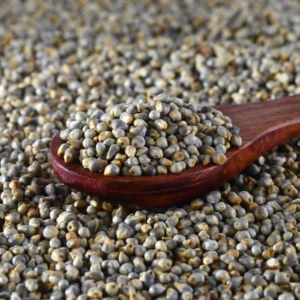
Pearl millet is rich in protein, iron, magnesium, and fiber. It helps improve digestion, supports heart health, and can help regulate blood sugar levels, making it an excellent choice for people with diabetes. Bajra is also known to combat anemia due to its high iron content and is often recommended for boosting energy and reducing fatigue.